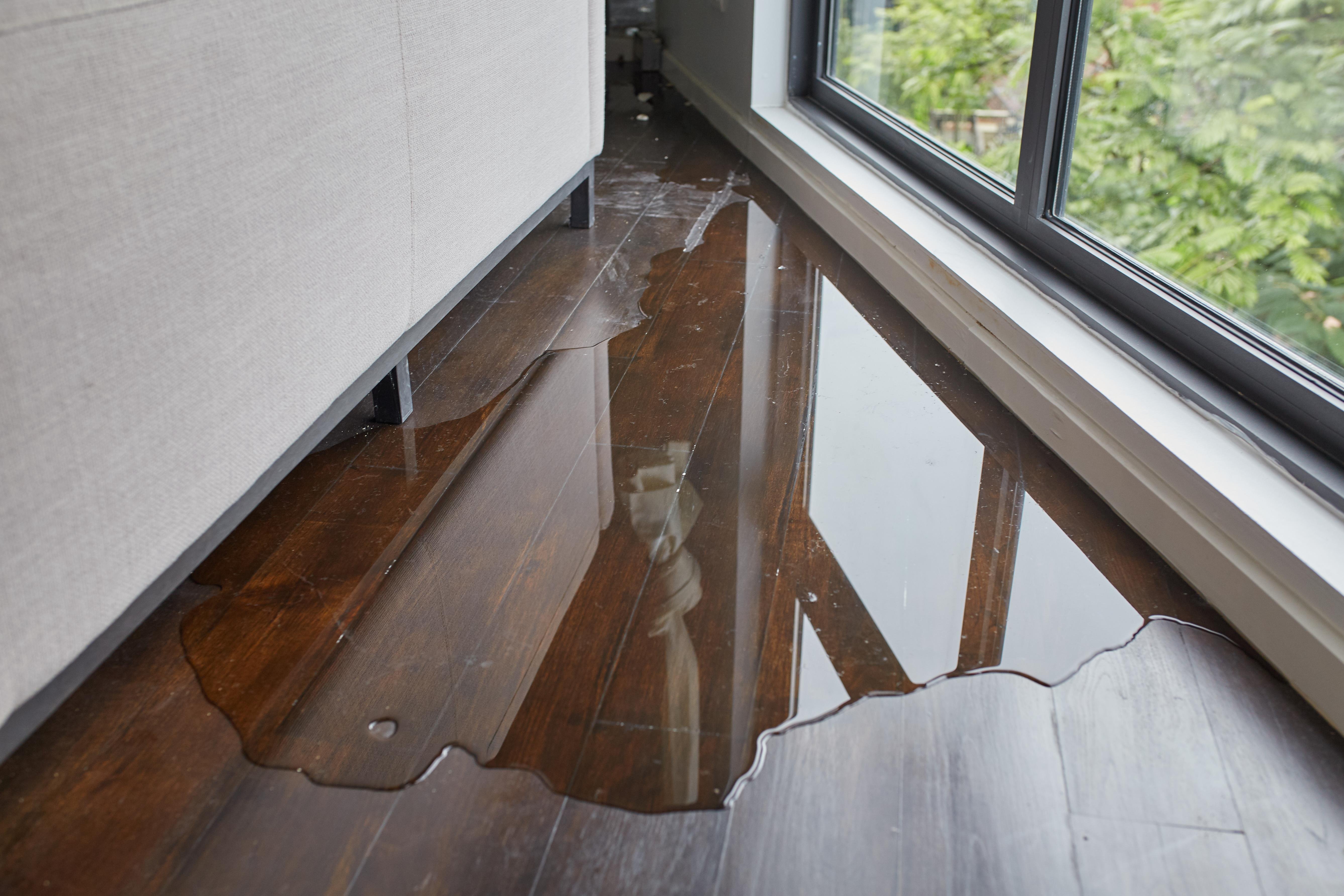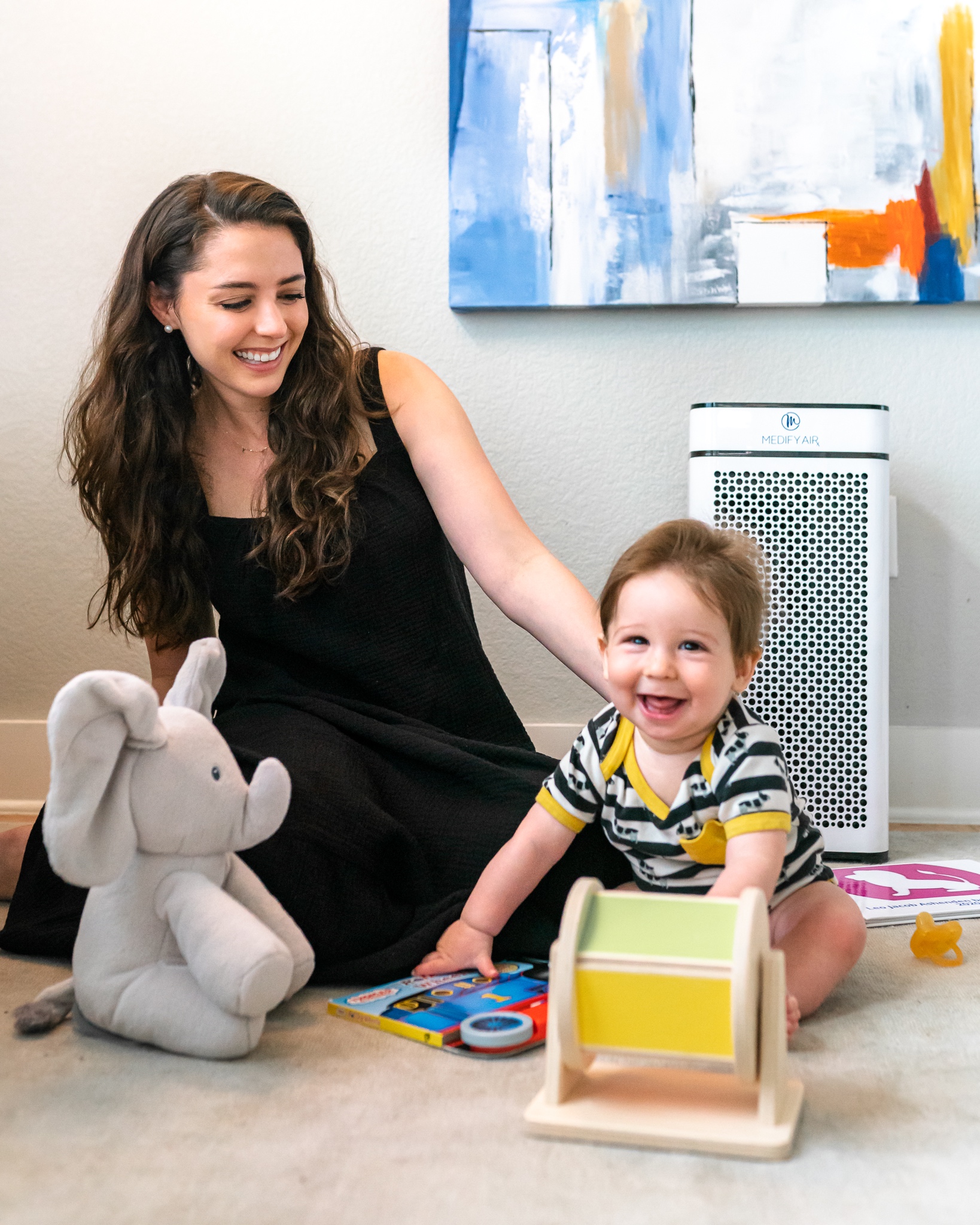The recent Texas freeze is, at this point, widely known for the damage it caused in homes throughout the region. The weather in Austin, where I live, is typically mild, between 43 and 97 degrees. Infrastructure here is built to keep buildings and structures cold in the summer, with pipes dug shallowly and mainly running through attics.
As a result, the plummeting temperatures caused pipes to freeze and burst in hundreds of homes. Damage to homes was largely reported, but even now that the sun is shining and the most challenging time has passed, residents are still dealing with the detrimental effect of indoor water damage to their air quality and health.
Mold and mildew can be very harmful to the respiratory system, and exposure can lead to flu- and cold-like symptoms; it can exacerbate existing conditions and be deadly if contact is long-term.
In my home, we use a Medify Air purifier to help freshen, sanitize, and purify the air we breathe every day. However, I also now realize that, prior to recent events and my subsequent research, I did not know enough about other ways to improve indoor air quality, the terrible health effects of mold and mildew in my home, or the other sources of water damage and how to handle it.
What Are Some Other Sources of Water Damage?
While most of Austin dealt with burst pipes and/or flooding, many other forms of water damage can occur in the home.
Storming and heavy rain waters are most common, but any plumbing issues can cause irreparable damage as well. Leaking or bursting pipes, backups in toilets, showers, or sinks, and any buildup in low pipe areas can both expose your home to damage and cause sewer backups in your yard.
The crawlspace under your home, poor insulation and/or an unchecked leak in your attic, or less frequently visited corners of your basement can also be hotspots for ongoing water damage and mold growth.
Other lesser-known sources of water overflow include HVAC units and malfunctioning household appliances such as bursting hot water tanks and washing machines. If you experience any of these issues, I recommend contacting a water damage restoration company to fully assess the damage and help you plot a course for repair.
The United States Environmental Protection Agency (EPA) warns that mold can start to grow in as little as two days after an interior space gets wet. That growth is tenfold if the space remains wet for any additional time. The EPA suggests using an N-95 mask at a minimum, along with goggles and other protective equipment, and cleaning mold up entirely before occupying the home after it is subject to water damage.

What Are the Health Risks of Mold?
Mold can grow at any temperature and on any surface. Not only will it destroy your property and personal possessions, but it also hurts your health.
First and foremost, mold spores that float through the air and contaminate air quality can deeply harm your respiratory system. This can cause breathing problems, intensify asthma and allergies, and even cause aspergillosis (infection by the fungus Aspergillus, usually in the lungs) in some people.
Aspergillosis is a condition caused directly by the inhalation of certain types of mold spores. It can lead to its own set of diseases such as:
- Allergic Aspergillus sinusitis
- Fungus ball of aspergilloma
- Allergic bronchopulmonary aspergillosis
- Chronic pulmonary aspergillosis.
Effects of aspergillosis can be:
-
- Weight loss
- Headache
- Breathing problems or difficulty breathing
- Blood-producing cough
Other conditions inhalation of mold can cause include:
- Chronic rhinosinusitis
- Bronchitis
- allergic fungal sinusitis
- allergic alveolitis
- Hypersensitivity pneumonitis
Finally, long-term effects of mold exposure include:
- Memory loss
- Anxiety
- Insomnia
- Confusion
- Depression
- Trouble concentrating
- Life-threatening primary and secondary infections, especially in immunocompromised patients
What Can We Do to Improve Indoor Air Quality?
1. Purchase a Good Air Purifier
My very first recommendation is to purchase a Medify Air purifier. They offer a product for nearly every price range and space.
One neat thing the company does is offer a subscription service for replacement filters — a huge help if you’re like me and constantly try to stay on top of a million other things. Medify Air remembers which device you purchased and sends you the correct filter to fit your purifier at regular intervals, so that is one thing off my plate, and I love it.
Home air quality is obviously important, but schools and businesses have trusted Medify Air for years and it meets the standards set by the World Health Organization (WHO).
The WHO recommends that “to effectively remove airborne particulate matter, a High-Efficiency Particulate Arrestance or HEPA filter with a rating of at least H13 of above is needed.” Medify Air purifiers are rated at H13, removing 99.9% of particles down to 0.1 microns. These are the products I use, and they receive my highest recommendation.
.jpg?width=6016&name=Copy%20of%20Copy%20of%20DSC_1529%20(1).jpg)
2. Keep your Home Clean and Let the Fresh Air In
According to Harvard Health, one of the best free ways to improve indoor air quality is to keep your home clean. This reduces allergens, animal dander, and other particulate contaminants that can irritate our respiratory systems.
Frequent vacuuming of rugs and other upholsteries, changing linens, bedding, and drapes regularly, and clearing clutter where dust collects are all ways to reduce immune responses to allergens and create a healthier home.
To take this tip a step further, use a vacuum equipped with a HEPA filter and open your windows to keep any kicked-up contaminants from settling again on your home’s surfaces.
Finally, depending on your style and preferences, hard-surface flooring collects less dust and provides for easy cleaning, and you can even opt for area rugs that you can toss in your washer and dryer. (The American Academy of Allergy, Asthma & Immunology states it is best to wash in water that is at least 130 degrees.)
Personally, the use of my Medify Air purifier gives me peace of mind that the air inside my home is safe, clean, and is not causing any damage to my family or me. The recent events in Texas shed light on the risks of water damage to our indoor air quality. From there, I began to realize that this is a problem that can exist outside of these one-time events!
Mold-causing water damage can come from many sources, and I want to be aware of the different places in my home I should be keeping an eye on so that I do not fear the health effects of mold and poor air quality. If you are interested in how I put this information into practice, you can follow me on Instagram @thathealingfeeling, and I will post how I integrate these air quality-improving tips into my daily life.



.jpg?width=6016&name=Copy%20of%20Copy%20of%20DSC_1529%20(1).jpg)
